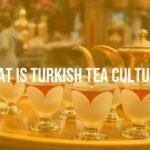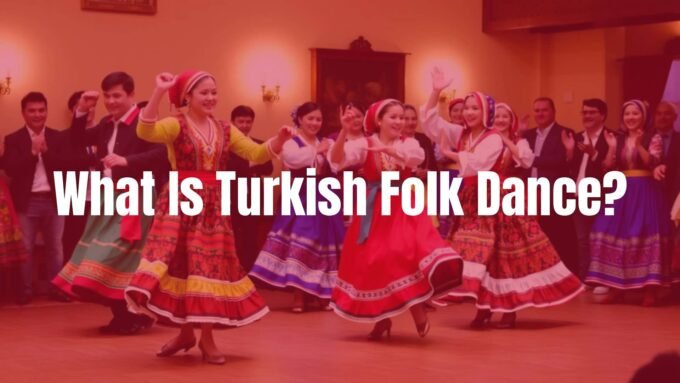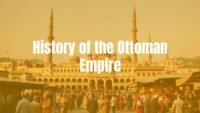Turkish wedding traditions bring together centuries of history, local customs, and a mix of old and new ways. A wedding in Turkey is often more than a single day. It can last several days and includes many steps filled with meaning. From the first proposal to the happy gatherings after the wedding, each moment shows the value placed on love, family, and community. These customs change with time but still keep their core spirit of commitment and the joining of two families.
A Turkish wedding also shows the country’s warmth, respect for heritage, and love of celebration. Some customs may seem unusual to visitors, but each has a purpose: to bless the couple and wish them a good future. This article will explore the roots of these traditions, how they differ across regions, and the heartfelt details that make Turkish weddings special.
Turkish Wedding Traditions: Origins and Evolution
Turkish wedding customs grew from many time periods and cultures. Turkey sits between East and West, so its weddings reflect a blend of influences. Old Anatolian practices, Islamic traditions, and newer Western ideas all play a part. The customs kept adapting, while holding on to their main meaning.
In the past, weddings were big community events, often lasting three days and three nights, especially in small towns and villages. Everyone helped with preparations, music, and dancing. The focus was on celebrating together and welcoming the couple into shared life with the support of family and neighbors.
Historical Influences on Turkish Weddings
Over time, many layers shaped Turkish weddings. Pre-Islamic Anatolian customs, Islamic practices, and later Western touches all added something. The henna night, for example, began long ago and became a meaningful pre-wedding event. Family blessings and community-focused celebrations go back to times when family and tribe were central.
The Ottoman Empire also left a clear mark. Elaborate clothing, ceremonial music, and certain gift traditions often come from that era. Legal marriage has changed too, moving from only religious ceremonies to today’s required civil marriages, with many couples also choosing a religious blessing. These changes show how Turkish culture respects its past while living in the present.
How Turkish Wedding Traditions Vary by Region
Weddings across Turkey share warmth and hospitality, but local styles add variety. As the scenery shifts from busy Istanbul to the caves of Cappadocia or the Aegean coast, customs shift too. In more traditional towns and rural areas, weddings are longer and involve more community. The dawn “flag-planting” ritual by the groom’s side is common there, marking the start of the celebrations and the new home.
In cities, core traditions remain but are often shorter or adjusted to modern life. A three-day wedding might become one big evening, or rituals may be done in a new style. Choices like venue, music, and dress can differ between a wedding in Kayseri, which may highlight family roots, and a more modern event in Izmir. These differences show Turkey’s rich mix of local cultures shaping national customs.
Key Pre-Wedding Customs in Turkish Culture
The excitement starts well before the ceremony. A series of pre-wedding rituals bring families together, confirm the couple’s commitment, and prepare them for married life. These steps are more than formalities. They carry meaning, advice, and support from both families.
These moments link single life to married life. They bless the couple, strengthen family ties, and help the pair start with strong backing from loved ones.
Marriage Proposal and Engagement Rituals
Traditionally, the groom’s family visits the bride’s family to ask for her hand. This is a respectful and serious request. If accepted, the engagement ceremony, called “nişan,” follows. It can be a small family event or a larger party, but its purpose is the same: to announce the couple’s plan to marry and unite the families.
During nişan, rings called Alyans are exchanged. Unlike many Western weddings, this happens at the engagement, not at the altar. An elder ties the rings to the couple’s fourth fingers on the right hand, showing their promise. Today, many engagements take place in restaurants or halls with more guests, but the focus remains on bringing two families together.
Henna Night (Kına Gecesi) Significance
Kına Gecesi, the henna night, is one of the most loved pre-wedding events. It is usually women-only and held the night before the wedding. It is both emotional and joyful. It says farewell to the bride’s single life and sends good wishes for her marriage. People believe henna protects from harm and brings luck.

The bride, often in a red “bindallı” with gold embroidery, sits veiled at the center. A married woman prepares the henna and may add a coin for luck. Women hold candles in dishes with henna and sing traditional songs like “Yüksek yüksek tepeler,” which often brings tears. The aim is to help the bride express her feelings at this big change. After a family elder places a gold coin in her palm, henna is applied and her hands are wrapped in red cloth. Then the mood turns festive with dancing, food, and fun. Guests may also get a small henna mark for luck. This night holds both sadness and joy, marking the bride’s step into a new life.
Family Blessings and Preparations
In the lead-up to the wedding, families play a big role in preparing the couple’s new home, guided by mutual blessings. Both sides often help provide what the couple needs. Many couples move from their family homes into a fully furnished place with new items, symbolizing a fresh start.
In the past, brides carefully made a hope chest of hand-sewn towels, sheets, blankets, and tablecloths, often with their mothers. Today, many items are bought, but the “glory box” tradition continues, showing family support and care. These efforts are practical acts of love, with each item chosen for the couple’s comfort and happiness. This shared work brings the families closer and helps the couple feel supported as they start their life together.
Traditional Turkish Wedding Attire and Symbols
Wedding day clothing and symbols catch the eye and carry meaning. What the bride, groom, and guests wear reflects hopes for the future and links to tradition. Bright colors, detailed designs, and special accessories make the day look and feel special.
These choices are more than fashion. They express identity, heritage, and the value of marriage. Old symbols appear in modern designs, creating a timeless Turkish style.
Bridal Dress: Styles, Colors, and Accessories
Many brides now wear a white gown, influenced by global styles. For some, this is the first time wearing a formal dress, marking a change into womanhood and marriage.
Traditional colors and details still matter. A red veil or ribbon tied around the waist is common and stands for purity, luck, and wealth. Some brides add henna-style patterns to modern dresses as a quiet nod to tradition. For Kına Gecesi, the bride often wears a red “bindallı” with gold embroidery. The mix of a white gown with red accents shows how old and new blend in Turkish bridal fashion.
Groom’s Attire and Role
The groom’s look is usually a suit or tuxedo, simple and elegant. His role in certain rituals shows his promise and responsibility in the new household.
He may join the dawn “flag-planting” ceremony with the men of the wedding party after morning prayer, placing a flag near the new home to mark the start of the day. During the “bride pickup,” the bride waves a Turkish flag given by the groom as she leaves her family home. These acts, along with his presence in all key moments, show his place in the story and his readiness for married life.
Symbolic Details: Sashes, Coins, and Red Ribbons
Many small details carry big meaning. Common symbols include:
- Red ribbon or sash: purity, luck, and wealth; also protection from harm
- Gold coins: blessing, prosperity, and a practical start for the couple
- Evil eye charms: protection against bad luck
At the reception, guests often pin gold coins or money onto the bride’s red ribbon or a sash worn by the couple. During Kına Gecesi, a gold coin is placed in the bride’s palm before the henna. These tokens are more than decoration; they carry good wishes for a bright future.
Ceremony and Rituals During the Turkish Wedding Day
The wedding day brings meaningful ceremonies and lively customs. It blends legal steps with spiritual blessings and cultural celebration. By the end, the couple is legally married and warmly welcomed by family and friends. Quiet vows meet joyful music, and every part marks the importance of the day.
Some rituals are very old, others newer. Together they involve the whole community, bless the couple, and set the tone for a long, happy marriage.
Civil and Religious Marriage Ceremonies
Modern Turkish law requires a civil ceremony. A local official, the “nikah memuru,” conducts a short, legal wedding with witnesses. This can happen at the venue or at a registry office before the party. After saying “I do,” there is a playful moment when the couple tries to step on each other’s foot. People say the one who steps first will have the final say at home.
Many couples also have a religious wedding, or “nikah,” led by an Imam with two witnesses. It is not a legal act but a spiritual blessing. Couples often choose both, honoring the legal and the spiritual parts of marriage.
Processional Traditions and Planting the Flag
The day often begins with processions full of color and sound. The first is the dawn “flag-planting” by the groom’s side. After a prayer, they place a flag on a high spot near the couple’s home. It signals the start of the wedding and the birth of a new household.
Later, the “bride pickup” takes place. Years ago the bride might ride a horse; today, decorated cars are more common. The Davul Zurna, a drum and wind duo, leads the way with lively music. As she leaves, the bride looks in a mirror, a gesture linked to a happy marriage. She waves the Turkish flag given by her groom and sets off to her new life with cheers all around.

Music, Dance, and Folk Customs
Music and dance are at the center of the celebration. The Davul Zurna often plays throughout the day, from the procession to the reception, filling the air with rhythm.
Folk dances like the “Halay,” a line dance with guests holding hands, are crowd favorites. Many weddings also have a DJ and Western music, but traditional steps remain strong. The “Dance of the Fathers” is a highlight: the bride’s father and the groom circle each other while guests toss coins and bills for children to pick up. These moments show shared joy and bring families closer.
Turkish Wedding Reception: Food, Gifts, and Celebrations
After the formalities, the reception takes off with food, music, and warm wishes for the couple. It brings families and friends together to eat, dance, and celebrate. Hospitality and generosity shine as the newlyweds begin their life side by side.
The reception blends Turkish flavors, gift-giving, and lively entertainment into a night to remember.
Traditional Foods and Drinks Served at Turkish Weddings
Weddings often feature a generous meal. While menus vary and may include global dishes, some foods are classic. A well-known dish at traditional village weddings is “keşkek,” made with wheat and chicken. It was added to UNESCO’s Intangible Cultural Heritage list in 2011. Preparing it takes effort, and the groom and his friends often help by grinding the wheat in advance.
Other foods may include meze (small starters), lamb shanks, and many savory plates. Desserts like baklava and Turkish delight sweeten the night. Many weddings do not serve alcohol, keeping the focus on family-friendly fun. A tall wedding cake is cut by the couple, and they taste the first slice before guests receive theirs.
Gift-Giving Customs and Gold
Gifts help the couple start strong. Money and gold are the most traditional and valued presents. Guests bring gold coins with red bows or money in gold-colored envelopes. These gifts are both symbolic and practical.
At many receptions, guests line up for a “gold ceremony.” They pin coins or bills to a red ribbon or sash worn by the couple. Some add gold bracelets for the bride or place money in a red-lined basket. At energetic weddings, people may even toss money into the air. This shared support helps the couple as they build their home.
Entertainment, Decoration, and Festive Elements
Energy stays high with music and dancing, often led by the Davul Zurna. Traditional dances like the Halay invite everyone to join the fun. Modern playlists may appear too, but the spirit of folk dance remains.
Decor can be simple or elaborate. While red is traditional, many weddings use wider color themes, flowers, drapes, and lighting. Turkish touches like the evil eye and pomegranates often appear in the decor. Brides may throw a bouquet, and another custom has the bride write the names of single friends on the sole of her shoe-the name that fades first is said to be next to marry. Near midnight, the couple and their parents say goodbye to each guest and often hand them a small package with cake and an evil eye charm.
Post-Wedding Turkish Customs and Family Gatherings
The celebration does not end at the reception. It often moves into post-wedding customs and family visits. These steps welcome the bride into her new family, send more blessings, and bring both families even closer. They tend to be smaller, focusing on close relatives.
These moments show how family and community remain central in Turkish life. They help the couple move into married life with guidance, care, and warmth all around.
First Morning Traditions and Visiting In-Laws
In the days after the wedding, some families follow “first morning” customs, which vary by region. A key post-wedding step is visiting the in-laws. This visit helps formalize the bride’s place in the groom’s family and strengthens new ties.
The older custom of “gelin alma,” or fetching the bride, often happens on the wedding day but carries meaning into the days after. Today it feels more like a party, with car honks, dancing, and singing to welcome the bride. The goal stays the same: to welcome her fully into the family while keeping traditions alive in a modern way.
Community Involvement and Homecoming Rituals
Community spirit continues after the wedding. A car convoy may escort the couple to their new home, horns sounding as a public sign of celebration. Children may playfully block cars with the hope of getting small tips, adding fun to the ride.
When the couple reaches home, the bride’s family may lead them into the nuptial room, or “Gerdek.” A close relative holds their hands and prays for a happy future. The lively convoy and the quiet prayers together show the support around the couple as they start married life, uniting two families and their wider community.
Frequently Asked Questions About Turkish Wedding Traditions
What are traditional Turkish wedding gifts?
The most common gifts are money and gold. Guests often bring gold coins with red bows or money in decorative envelopes. These gifts help the couple begin their life together and are seen as blessings for prosperity.
At the reception, guests may pin coins or bills onto a red ribbon or sash worn by the bride, or sometimes by both the bride and groom. While some people give household items, the focus is usually on financial gifts so the couple can choose what they need.
How do Turkish wedding customs differ in rural and urban areas?
Rural weddings are often longer and more traditional, with many community members taking part over several days. Rituals like flag-planting and a horse-led or lively car “bride pickup” are more common. Folk dances and dishes like keşkek prepared together by neighbors are typical.
Urban weddings are usually shorter and fit busy schedules, often as a single evening in hotels or wedding halls. Couples still keep core customs like Kına Gecesi and gold gift-giving, but may add Western music, decor, and style. Many have both civil and religious ceremonies, sometimes blending the religious part into a larger, modern event.
| Rural Weddings | Urban Weddings |
|---|---|
| Multi-day celebrations with broad community involvement | Often a single evening with a curated guest list |
| Traditional rituals (flag-planting, extended “bride pickup”) | Core rituals kept but shortened or updated |
| Folk music/dance led by Davul Zurna; communal keşkek | Mix of traditional and Western music; venue catering |
| Strong focus on regional customs and attire | More modern decor and style with traditional touches |














Leave a comment